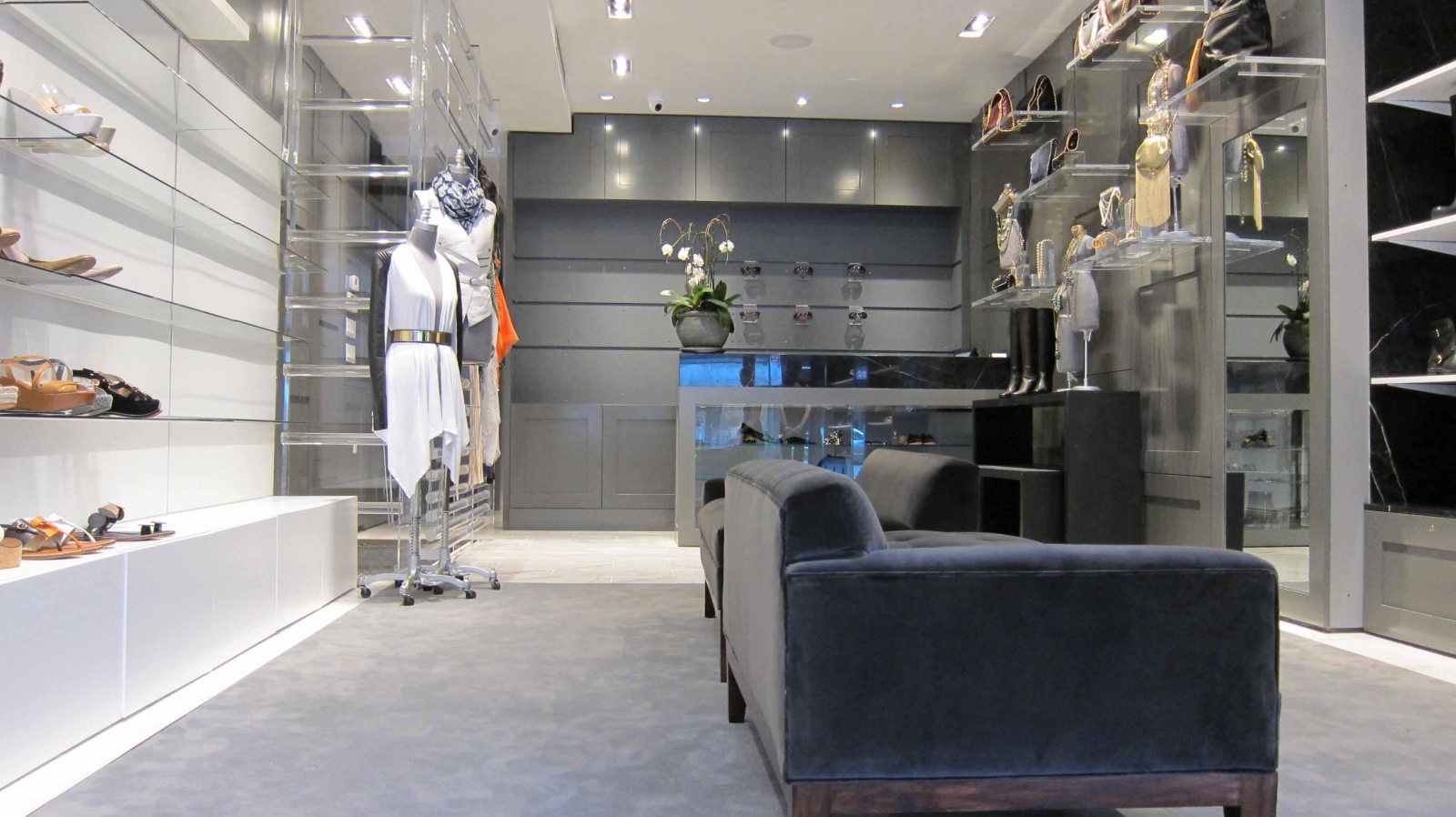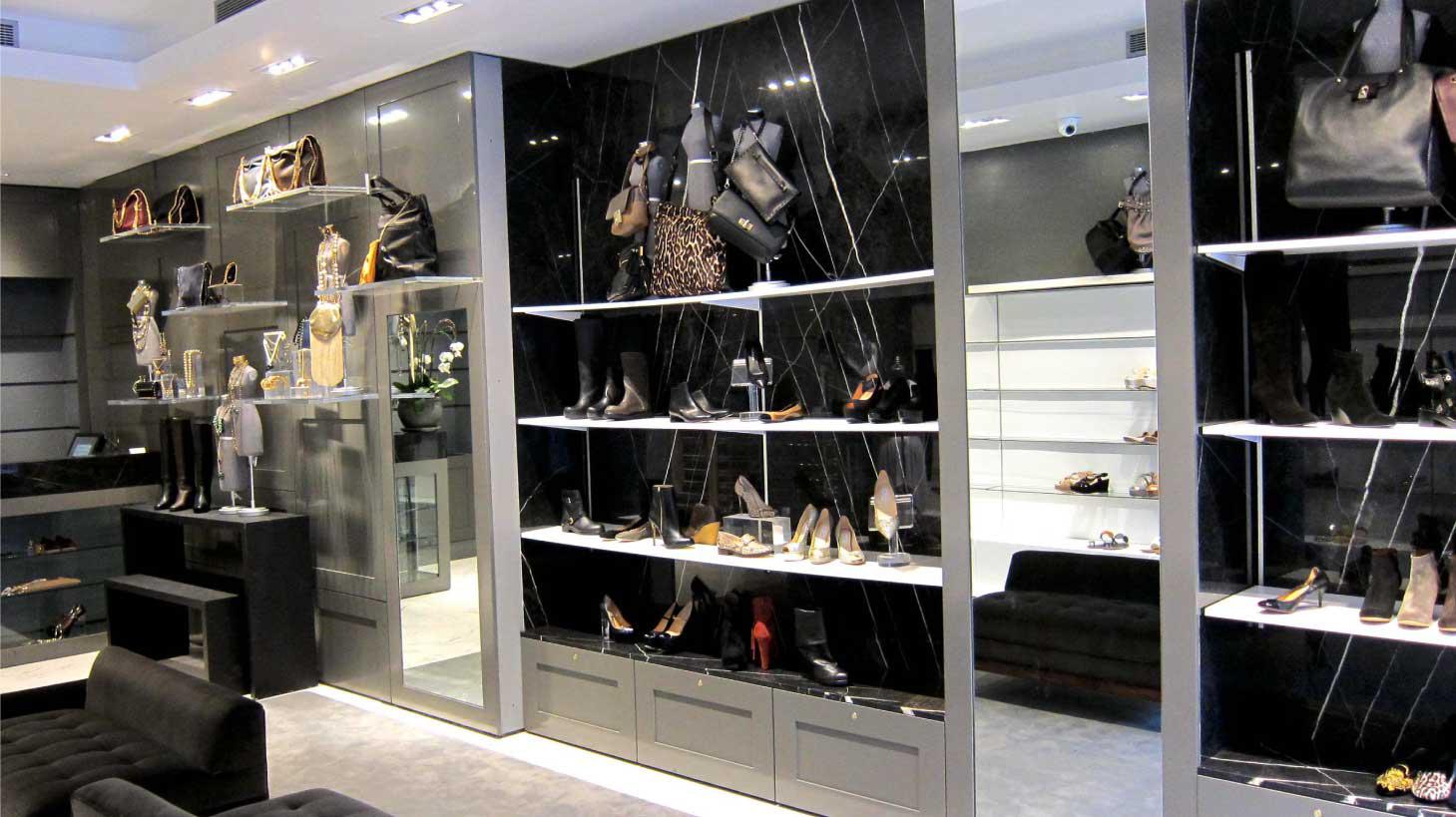
August 8, 2013
How Can Independent Retailers Survive in New York City?
Urban development plays havoc with a location’s character. In the midst of this change, how can a unique shop thrive?
Walking to work everyday, I pass buildings and store fronts that seem to have been under construction forever. As I walk under the “temporary” structures that have become almost invisible to me, I realize that the scaffoldings are not nearly as invisible as the stores and businesses behind them.
Last week, I sat down with Ritch Erani, owner and collection curator of CHUCKiES NYC, one of the last independent shoe retailers on the Upper East Side. b r e a d design group, the firm I worked for at the time, had done the store’s interiors at their new location. In total CHUCKiES has three locations; one in Brooklyn, one on Madison Avenue, and the newest one on Lexington Avenue, which has replaced the Third Avenue location. Intrigued by the store’s move prompted me to organize meeting with Ritch Erani.
Charles and Ritch Erani, brothers, founded CHUCKiES and opened their first store in 1988, on Third Avenue on the Upper East Side, where they remained for 25 years. Known for exclusively selling the Ritch Erani NYFC line, they are also curating tailored collections of Jimmy Choo, Isabel Marant, Valentino and others.

Courtesy b r e a d design group
Jessica Kwasniak: What was it like moving locations after 25 years on Third Avenue?
Ritch Erani: It is very bittersweet. When we first moved to Third Avenue, [the location] was very chic. People today walk around in pajamas. It is just a sign of the times. Back the eighties Third Avenue was boutique after boutique after boutique. There were [few] high rises around. [Most] buildings were very low. I have watched the [neighborhood’s incredible] evolution over 25 years.
JK: There is also a significant amount of scaffolding across the way, and some road blocking. I imagine you’ve had a tough time brining customers in? How has this been affecting business?
RE: As far as all the scaffolding, it is not pleasurable. When you add scaffolding, workmen, and noise into the mix, people do not come. [They] do not want to go to an area that looks like a warzone. Especially when they can get [the same type of merchandise] everywhere else. Everything is oversaturated. The respect we used to get, as an independent retailer is gone.
[When you’re coming to our store now] you’re focused on getting out of the tunnel. Also, the new subway line is coming in, they are ripping up the sidewalk, [which makes it look] like a warzone. My fear is that [the new subway line] will create more people rushing to work, and they will crowd the people who [come] to shop. There is just too much of everything. The city is getting too big. When we started in the eighties, New York wasn’t as big.
JK: Has this experience changed the way you look at the city, and in particular the way you look at your location, for future stores?
RE: I am trying to make the new ways of doing business work for us. I tried making social media work for us, especially Instagram [to send out notices of the new collections], but then one day a customer comes in and asks me what is new. I showed her and she replied that she had seen it already on Instagram. That is when I knew it wouldn’t work for me. I think moving to the new location on Lexington Avenue is a great start. The people there are not typically Bloomingdale’s shoppers. They are boutique shoppers.

Courtesy b r e a d design group
JK: What is it like shopping at CHUCKiES? What keeps you in it?
RE: Shopping at CHUCKiES has always been an experience. WE know our product. We are going to the fashion shows. Sometimes people need to shop in boutiques, for direction. Boutique workers know fashion. At a major department store, their shoe department doesn’t go to the runway shows. They can’t offer fashion advice. We go to the shows. We can help you pair shoes with outfits. There is attention to the individual at CHUCKiES. I love when customers come in and tell me they got so many compliments from a pair of shoes.
As much as development is vital to our city, from my vantage point it is equally destructive as it is hopeful. As more and more high rises came into the Upper East Side, the character that had emerged there has disappeared. Innovation comes at a price. And innovation not only in construction, but in merchandising as well, is changing the retail scene as we look more and more for online deals and shop for vintage items on clearance racks.
Architecture is so much more than an art. It is also psychology. It affects the way we move, the way we think, and the way we interact with a street. If you feel crowded, rushed, claustrophobic, will you want to window shop there? The answer is probably no. Ritch Erani saw this. He knew his clientele and knew what he needed out of his space. Third Avenue could no longer provide it. CHUCKiES, though, is not taking the many shifts in retail sitting down. They are changing with the city, which in my mind makes them truly a New York business.
Jessica Kwasniak is a Brooklyn-based writer. She is currently in her final year at Pratt Institute, and looking forward to completing her thesis. Find her on twitter @JessKwasniak.





